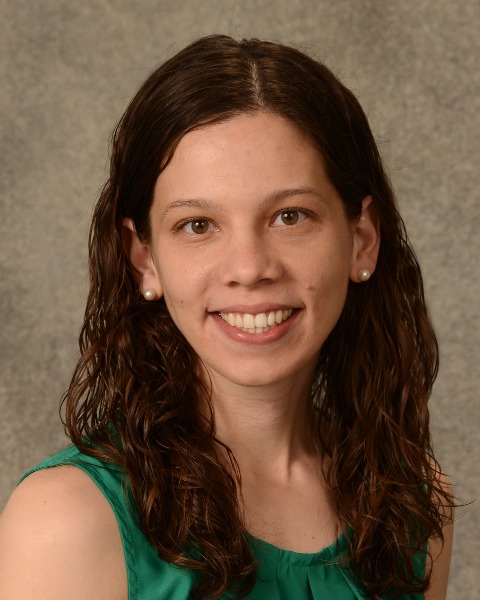Quick Fire Cases
Prenatal Fetal CMR for postnatal intervention planning in obstructed infradiaphragmatic total anomalous pulmonary venous return (QF_TH_56)

Eleanor Lehnert Schuchardt, MD
Assistant Professor Health Sciences, Pediatric & Fetal Cardiology
University of California San Diego / Rady Children's Hospital
San Diego
Eleanor Lehnert Schuchardt, MD
Assistant Professor Health Sciences, Pediatric & Fetal Cardiology
University of California San Diego / Rady Children's Hospital
San Diego- JB
Joni Blood, RT
Cardiac MRI Technologist
Rady Children's Hospital - AR
Ana E. Rodriguez Soto, PhD
Staff Scientist, Dept of Bioengineering
University of California San Diego 
Francisco J. Contijoch, PhD, FSCMR
Associate Professor
University of California San Diego- RA
Robyn Augustyn, BSc, RT
Advanced Imaging Technologist
Rady Children's Hospital 
Justin Ryan, PhD
Director and Research Scientist, Webster Foundation 3D Innovations Lab
Rady Children's Hospital
Henri Justino, MD
Pediatric Interventional Cardiologist
UC San Diego/Rady Children's Hospital- HS
Heather Y. Sun, MD
Fetal and Pediatric Cardiologist
Rady Children's Hospital/University of California San Diego - AP
Amanda Potersnak, RT
Advanced Imaging Coordinator
Rady Children's Hospital - HE
Howaida El-Said, MD
Interventional Cardiologist
Rady Childrens Medical Center 
Sanjeet Hegde, MD, PhD
Pediatric Cardiologist, Advanced Imaging Director
University of California San Diego
Presenting Author(s)
Primary Author(s)
Co-Author(s)
A 28-year-old gravida-3 obese female carrying a male fetus was prenatally diagnosed with complex congenital heart disease (CHD) including double outlet right ventricle, subaortic ventricular septal defect, pulmonary stenosis and infradiaphragmatic total anomalous pulmonary venous return (TAPVR). Echocardiography suggested pulmonary venous obstruction with loss of pulsatility. The vertical vein (VV) insertion site was presumed to be near the ductus venosus but could not be definitively identified. The postnatal care plan considered a staged interventional approach, with percutaneous stenting of pulmonary venous obstruction, followed by surgical repair.
Diagnostic Techniques and Their Most Important Findings:
At 35 weeks gestation, a fetal cardiac MRI (CMR) was performed to assist in planning postnatal management and evaluate for pulmonary lymphangiectasia. The fetal CMR was conducted on 1.5-T (Sola, Siemens Heathineers, Erlangen,Germany) utilizing external Doppler-based gating (NorthH Medical, Hamburg, Germany). T2-weighted black blood imaging was obtained in three orthogonal planes, repeated in triplicate for motion correction using an open-source slice-to-volume reconstruction tool kit (SVRTK). The patient was positioned supine and imaged using a spine coil embedded in the table and 18-channel body coil. Both standard product cine and work-in-progress advanced cine with compressed sensing sequences were applied.
The CMR revealed a vertex fetus, estimated weight 2800g. Although individual pulmonary veins and the VV were not completely delineated in the T2-w stacks alone, a “twig-sign" of TAPVR was visible. Motion correction, 3D reconstruction and correlation with cine imaging provided further detail, and a vertical confluence was suspected. It was suspected that a confluence of upper veins descended before receiving the bilateral lower pulmonary veins. The VV then crossed the diaphragm via the esophageal hiatus. In the abdomen, the VV drainage followed the expected path of the left hepatic vein (left vitelline vein) and appeared distinct from the ductus venosus.
Learning Points from this Case:
At 37 weeks, spontaneous labor occurred. Baby was intubated and started on PGE in the delivery room. A postnatal cardiac CT was performed. By cardiac catheterization, the VV had a mean pressure of 29 mmHg and saturation of 91%, while the systemic PaO2 was 50mmHg. Two overlapping stents were placed in the entry of the VV to IVC. The residual VV to RA gradient was 5 mmHg.
This case highlights the utility of Fetal CMR as a supplementary prenatal tool for postnatal interventional planning in critical CHD. Despite the technical challenges such as maternal BMI of 47 kg/m2 and maternal breath-holds requirements, the imaging successfully met diagnostic goals and provided guidance for postnatal intervention. Motion correction greatly enhanced the diagnostic utility. Future advancements, including optimizing sequences for high-BMI populations and developing enhanced pulse sequences for improved liver/vascular contrast may continue to refine this approach.

